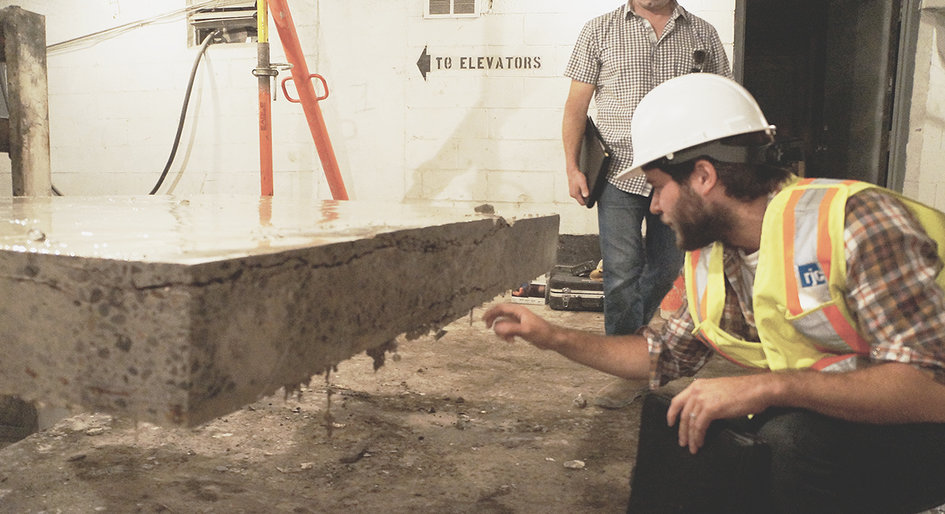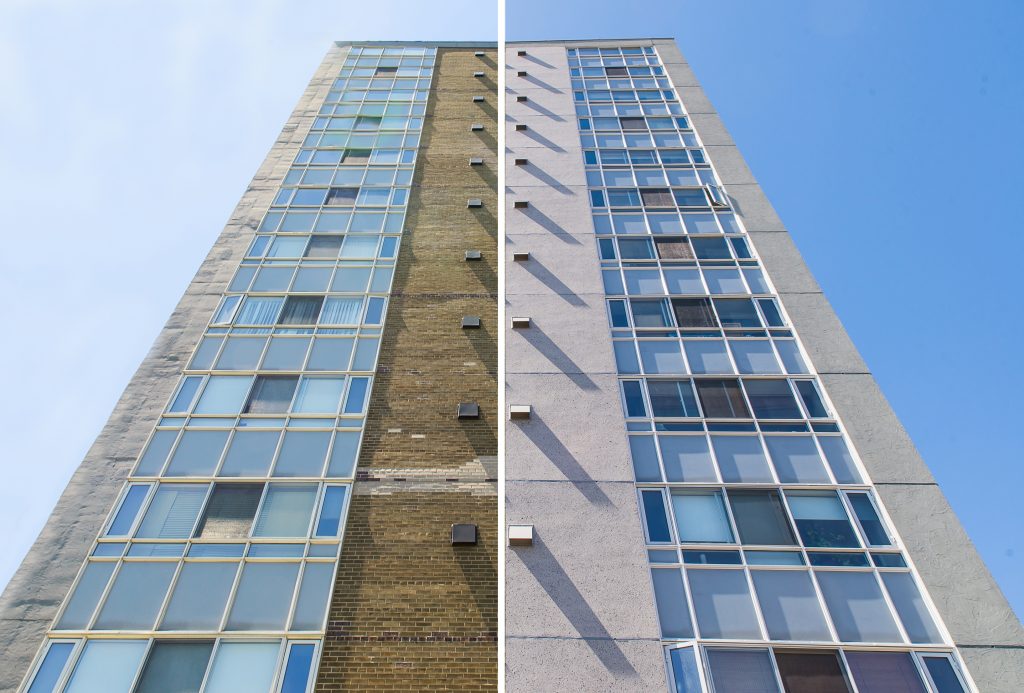New or old, every building will require repairs at some point. Whether it’s a state-of-the-art office tower equipped with the latest high-efficiency systems, or a dated apartment complex with an envelope 60 years old, no property owner will be spared unwanted capital expenditures indefinitely. But there is something that can be done to lessen the cost and seriousness of those hits: regular preventative maintenance.
Simply put, it means taking a proactive approach to monitoring the condition and components of a building. It means identifying potential trouble spots before they spiral into costly repairs. Think of the car owner who sticks to a regular service regimen: the expense of replenishing coolant from time-to-time is significantly cheaper than installing a brand new radiator. Similarly, a corroding pipe in a building’s plumbing system caught early could thwart a catastrophic flood.
Paul Fritze, a technical engineer and associate at RJC Engineers, is all-too familiar with the problems that can arise from deferred maintenance, neglect, or even from factors beyond an operator’s control—like staffing limitations, building restrictions or budget constraints.
“A building has so many components,” he says. “Unplanned expenditures and resulting deferrals to offset costs are a reality all property managers must accept. But it’s about the ability to minimize those costs and make educated decisions in how to best spend available budgets. It’s also about understanding that each building system has a service life, but to get that full service life requires investment in the form of maintenance.”
As an example, Fritze points to underground parking garages and the mitigation of repair costs that can be achieved through early detection of corrosion. “Because de-icing salts create aggressive environments for concrete garage structures, waterproofing systems are installed on the surface of the suspended slabs to protect against the inevitable decay,” he says. “But as the system wears and deteriorates over time, leaks form allowing the de-icing salts into the slabs. Naturally, the rate of deterioration grows at accelerated rates if left unaddressed.”
In this scenario, the proactive approach would be to locally repair the garage waterproofing system on a timeline that least impacts business. “One of my clients owns a heavily used pay parking garage in downtown Toronto,” Fritze explains. “To minimize overall costs, reduce construction time, limit stall closures and keep the work contained to slower periods, the client uses an annual phased garage waterproofing repair plan versus waiting for a large-scale problem to arise.”
Heading off problems before they grow and spread across many systems is the goal, he says. Better still, is to avoid them altogether by planned maintenance.
Incorporating best strategies: it all begins with a BCA
When it comes to creating a building maintenance strategy, Fritze recommends beginning with a good Building Condition Assessment (BCA) and Capital Plan. This is a financial planning tool developed by an engineering consultant (or team of consultants) in order to provide a “snapshot” of your building at the time of the assessment.
The intent of the assessment is to:
- Create an inventory of and describe the existing building systems;
- Provide the systems’ ages, general condition and estimated remaining life;
- Provide estimated repair or replacement costs over a defined timeline. (This can be anywhere from 5 to 25 years);
- Flag signs of concern warranting immediate action or further investigation.
The scope can also include compliance with various codes and high-level performance evaluations of the systems, as well as provide budgets for soft costs like engineering services and permits. Capital Plans specific to building systems carrying high replacement costs can also be implemented (i.e. roofs, parking garages, asphalt parking, mechanical/electrical equipment, windows and cladding).
In short, an assessment of this type allows owners to develop an expenditure schedule, so costs can be spread out as best as possible and budgets set in advance. It can also assist the owner in timing the performance of project scopes, so related expenditures can be combined to realize cost savings.
In addition to an assessment, Fritze recommends building owners seek consultation before undertaking any large project—up to a year prior to construction. “This will help to refine the construction cost estimates in the BCA, incorporate construction execution factors (i.e. hours of work, phasing, etc.) and define the project scope of work,” he says. “Any consultants you’ll want to hire will understand your business, values and needs. They are trusted advisors who are strategic business partners working with you to deliver a successful project.”
Guiding principles for property managers: steps for early prevention
Aside from seeking a detailed condition assessment, there are other valuable steps property managers can take to proactively maintain their buildings, and these can be done regardless of experience or technical savvy.
“Having a general understanding of the construction process, a feel for when to start a project, how long a project will take and the effects it will have on regular operation of their facility is helpful,” says Fritze.
He also recommends property managers perform regular building walkthroughs with facility maintenance staff and communicate often with tenants and clients to identify potential problems.
Finally, Fritze says it never hurts to develop a strong relationship with the contractors and consultants who’ve become familiar with your building. “Given all the factors that are beyond our control—from contractor availability, to time of year and tendering climate—the more property managers can do to thwart those costly building repairs, the better.”
Learn more about preventative maintenance and ways to extend the life of your building at: www.rjc.ca. For more information on building repairs, please contact Paul Fritze.







